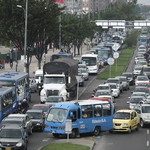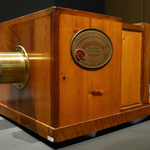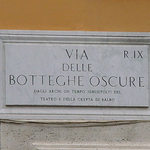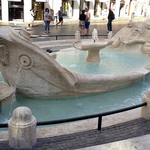Quartiere Rinascimento
This part of Rome is the one enclosed by the bend of the Tiber that includes the old districts of Ponte, Parione, Sant'Eustachio, Pigna, Campo Marzio, Regola up to the old "Ghetto". Particularly affected by its proximity to the Vatican, it maintains its original characteristics unchanged, having never been abandoned, like other areas, due to the overflowing of the Tiber.
Born as a purely popular area, it retains its splendor with countless artisan shops, small antiques or, more properly, "junk dealers" and "rag dealers" in its alleys, alleys, lanes and small squares that intersect with the only three existing routes at the time that led to St. Peter's: Via Giulia, Via dei Banchi Vecchi and Via del Pellegrino, Via del Banco di Santo Spirito and Via Papale.
It is a mix of ancient, Renaissance, Rococo and Baroque styles given that, also due to its proximity to the Papal seat, the Roman Nobility, Diplomacy and the families of the ecclesiastical "temporal power" entered it.
The first urbanization of the City was started by Sixtus V, but it was Alexander VII who tried to transform it by trying to create a particular scenography in each square and it was he who ordered that
"... the public squares (as obviously also the streets) made for the ornamentation of the City ... we want them to remain free and clear of any encumbrance"
thus giving the order to demolish all the terraces, stairs, ladders, steps in front of the houses; also demolishing corners of the same to improve traffic and the aesthetic appearance of the city.
In 1881 the new Italian State wanted to build a large artery (Corso Vittorio Emanuele II) that would cross the entire area, partly following the old Via Papale, connecting Termini Station with St. Peter's with a single route.
The urban planning need for this great work to relieve traffic congestion cannot be ignored, but behind the "urban planning need" the construction of this large artery, ungainly in many places and which caused a laceration of the entire urban fabric of the Papal City, there was the monotonous Piedmontese Savoy architecture with its backward ideology according to which monuments must be isolated from the context in which they were built, restoring them in an innovative way and reworking the style of the facades.
Many buildings suffered from this operation such as Palazzo Caffarelli-Vidoni, Palazzo Cesarini-Sforza, the Oratorio dei Filippini which with the widening of the Piazza della Chiesa Nuova has undergone a new vision different from the one wanted by Borromini or the Palazzo della Cancelleria
of which the right side was highlighted to the detriment of the main facade.
The demolition works, suspended in 1888, were resumed in 1902 with a new project that aimed directly at the Tiber where the construction of the new Ponte Vittorio Emanuele II was planned, which was inaugurated in 1911.

 The records of Rome. Big numbers, not always enviable, for a big city.
The records of Rome. Big numbers, not always enviable, for a big city. New Phot-O-Matic section. To spend some time looking at photos (also) of Rome.
New Phot-O-Matic section. To spend some time looking at photos (also) of Rome. The administrative, urban, toponymic and imaginative subdivisions of Rome.
The administrative, urban, toponymic and imaginative subdivisions of Rome. Notice for tourists: in Rome you drink for free. Historical fountains and 'big noses'.
Notice for tourists: in Rome you drink for free. Historical fountains and 'big noses'. Free museums return on the first Sunday of the month.
Free museums return on the first Sunday of the month.